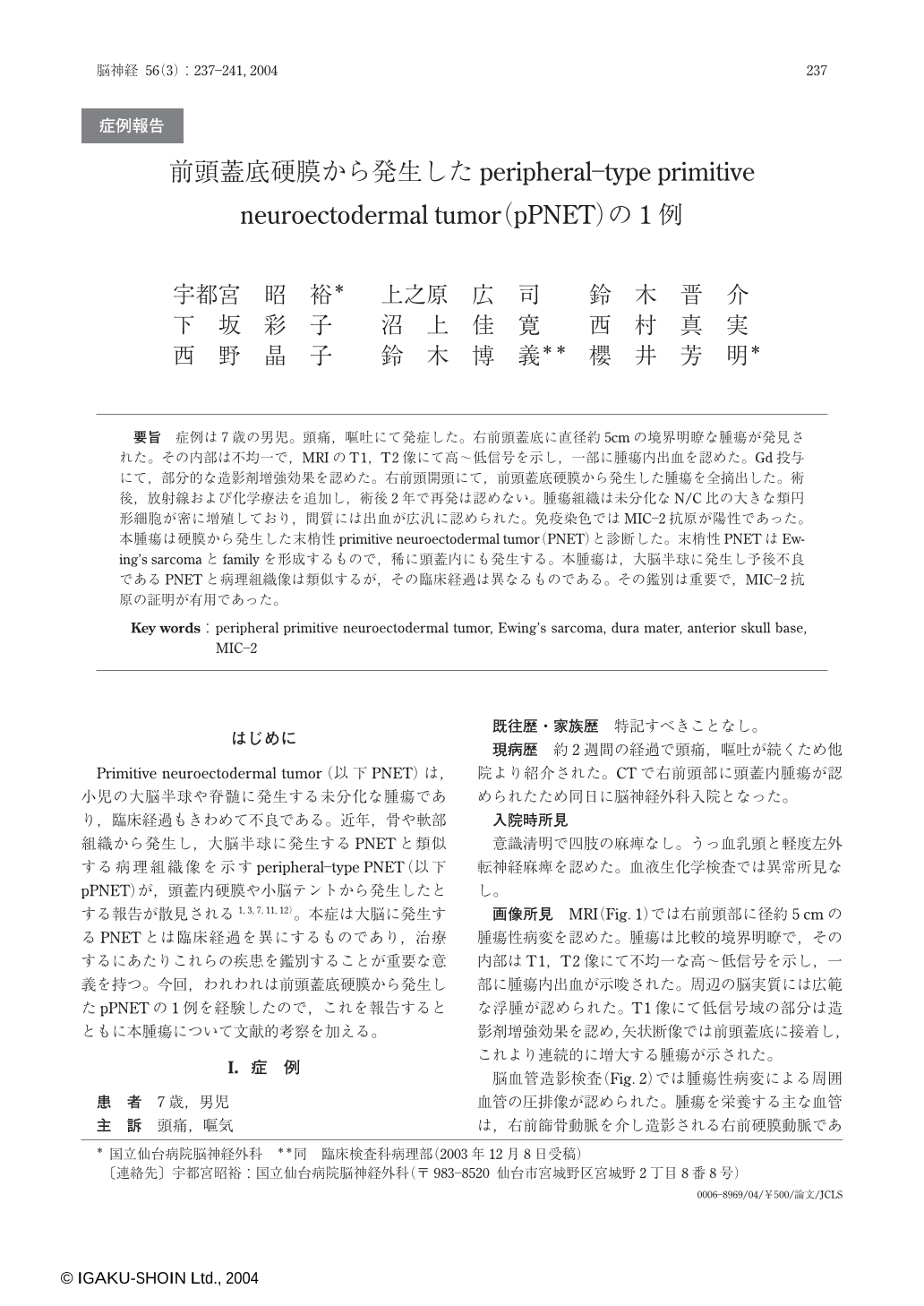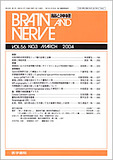Japanese
English
- 有料閲覧
- Abstract 文献概要
- 1ページ目 Look Inside
要旨 症例は7歳の男児。頭痛,嘔吐にて発症した。右前頭蓋底に直径約5cmの境界明瞭な腫瘍が発見された。その内部は不均一で,MRIのT1,T2像にて高~低信号を示し,一部に腫瘍内出血を認めた。Gd投与にて,部分的な造影剤増強効果を認めた。右前頭開頭にて,前頭蓋底硬膜から発生した腫瘍を全摘出した。術後,放射線および化学療法を追加し,術後2年で再発は認めない。腫瘍組織は未分化なN/C比の大きな類円形細胞が密に増殖しており,間質には出血が広汎に認められた。免疫染色ではMIC-2抗原が陽性であった。本腫瘍は硬膜から発生した末梢性primitive neuroectodermal tumor(PNET)と診断した。末梢性PNETはEwing's sarcomaとfamilyを形成するもので,稀に頭蓋内にも発生する。本腫瘍は,大脳半球に発生し予後不良であるPNETと病理組織像は類似するが,その臨床経過は異なるものである。その鑑別は重要で,MIC-2抗原の証明が有用であった。
A 7-year-old boy was admitted to our hospital because of headache and frequent vomiting. The patient was noted to have papilloedema and mild palsy of the right abducent nerve. Magnetic resonance image (MRI) revealed a large tumor in the frontal base with tumoral hemorrhage. Angiography showed the tumor was fed by anterior meningeal arteries. At surgery, the tumor was arising in the dura mater at the frontal base, and was removed totally. Histological examination showed the tumor to be composed of small cells with uniform round nuclei and minimal cytoplasm. Immunohistochemical studies were positive for MIC-2, NSE, C-KIT, vimentin, Class III-β tublin and glycogen, but negative for NFP, synaptophysin, chromogranin A and GFAP. MIB-1 labeling index was 40-50%. The tumor was histologically confirmed to be peripheral-type primitive neuroectodermal tumor(pPNET). Following surgery, he underwent whole brain, whole spine and local radiation therapy(30 Gy in total respectively) and received two 5-day cycles of chemotherapy, consisting of intravenous administration of cisplatin 20mg/m2に変換/day, etoposide 60mg/m2に変換/day and IFOS 900mg/m2に変換/day. After these therapies, follow-up radiological examination showed there was no recurrence of the tumor for 24 months.
Intracranial pPNET is rare. Ewing sarcoma and pPNET(ES/pPNET) is the designation given to a family of small round cell tumor arising in bone or soft tissues. Intracranial PNETs are devided into central nervous system PNET(cPNET) and pPNET. It is necessary that intracranial PNETs are divided into two types of PNETs because of different prognosis between these tumors. MIC-2 is a specific marker for pPNET/ES family and is useful in the differential diagnosis of these two types of tumors.
(Received : December 8, 2003)

Copyright © 2004, Igaku-Shoin Ltd. All rights reserved.


